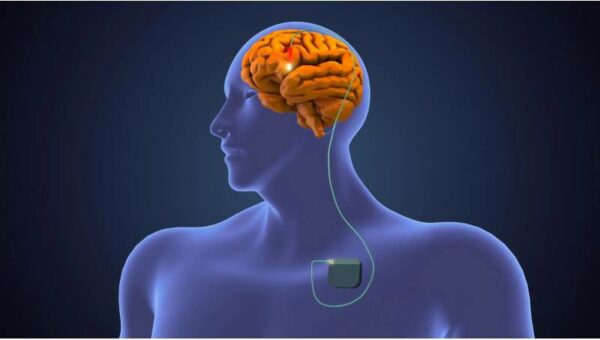If you’re noticing a wound on your skin that won’t heal then don’t neglect it as it might be a skin ulcer. Skin ulcers cause complications if not treated properly. Let’s know all about skin ulcers and how to treat them.
1. What are skin ulcers?
Skin ulcers are open wounds that don’t heal with time. They are caused due to poor circulation of blood. The wound doesn’t heal due to a lack of platelets that otherwise repair injuries and wounds.
3 in 1000 people suffering from skin ulcers have ulcers on their legs. Skin ulcers are also common on the feet, hips, and back.
You’ll notice a wound having thickened edges and it weeps blood and fluid. Sometimes it’s shiny and purplish. Skin wounds get painful with time if not treated.
But for proper skin ulcer treatment, your doctor should know the cause of your skin ulcer. So, let’s have a look into why blood flow slows down and causes skin ulcers.
2. What causes skin ulcers
Skin ulcers are caused due to poor blood flow. Following are the diseases that cause poor blood flow and turn your wounds into ulcers.
3. Diabetes
Diabetes can cause nerve damage due to increased blood sugar. This nerve damage usually affects the feet and legs. The patient can’t feel anything on the legs and so if an injury occurs, the wound can’t be felt. The high blood sugar levels and nerve damage slows down the blood circulation and thus the healing process also stops.
If left untreated, this wound can turn into an ulcer.
4. Arteriosclerosis
Arteriosclerosis or atherosclerosis is caused due to diabetes, mainly. It is a condition in which the arteries become narrow due to the accumulation of excess fat. This fat is called plaque. Plaque doesn’t allow blood to circulate through the arteries in a normal way. Thus circulation slows down and wounds can’t heal. These wounds might turn into skin ulcers as the skin tissue breaks down and develops a sore.
5. Venous insufficiency
Venous insufficiency is a state when veins can’t send all the blood from the legs back to the heart. So, this causes blood to accumulate on those veins and cause swelling. If not treated, the skin can cause ulcers due to increased pressure.
Varicose veins and blood clots can cause venous insufficiency and skin ulcers.
6. Pressure
Pressure can develop on your veins if you stay in position for a long time. This slows down the blood circulation and the skin can die and develop an ulcer.
7. Risk factors
You’re more likely to get skin ulcers if you have the following conditions:
- High blood pressure causes damage to the blood vessels and ultimately blood flow can slow down.
- High cholesterol levels increase the narrowing of arteries that can turn wounds into ulcers.
- Increasing age. With age, the blood vessels weaken and blood can’t flow through them properly.
- Restricted mobility. Due to paralysis or any illness in which you can’t move much, blood flow slows down, and pressure on blood vessels increases that can cause skin ulcers.
- Pregnancy. Due to hormonal change, the blood vessels in the legs can swell and cause skin ulcers. Varicose veins can also develop during pregnancy.
- Blood clots. If you have a history of blood clots then you might develop skin ulcers due to improper wound healing and slow blood circulation.
- Smoking. Tobacco in cigarettes can damage blood vessels. The blood circulation slows down, leading to skin ulcers.
8. Symptoms of skin ulcers
Skin ulcers look like an open wound. Often, blood or fluids ooze out from that sore, causing pain and swelling. The wound looks like a crater when it has turned into an ulcer. Other symptoms include:
- Redness
- Swelling
- Pain
- Itching
- Tenderness
- Discharge of pus
- Changes in skin texture
- Skin discoloration
9. Types of skin ulcers
There are 4 types of skin ulcers that are caused due to different reasons.
10. Pressure ulcers
Pressure ulcers or Decubitus ulcers are caused by continuous pressure or friction on the skin. This causes wounds that won’t heal properly.
Bones exert extra pressure when you stay in one position for long. So, this type of ulcer develops mostly on the hips, ankles, and back.
11. Venous ulcers
About 90% of leg ulcers are venous ulcers. Venous skin ulcers are caused due to insufficient blood flow in the leg veins. The legs don’t get enough blood supply and thus skin ulcers can form.
12. Arterial skin ulcers
Arterial ulcers are formed due to poor blood flow through clogged arteries. Arteries get clogged due to fat accumulation or they get shrunk with age and other factors.
Arterial skin ulcers mostly affect feet, ankles, lower legs, and heals.
13. Neuropathic skin ulcers
Neuropathic skin ulcers form due to nerve damage and clogged blood vessels. Nerve damage usually occurs due to diabetes.
Neuropathic ulcers mostly affect the pressure points of the feet. You won’t feel anything due to nerve damage but the wound can get worse if not treated.
14. How to heal skin ulcers?
If you suspect your wound to be a skin ulcer then the first thing to do is visit your doctor. Your doctor will carry out various diagnostic procedures including blood tests, x-rays, scans, and physical examination. After diagnosis, your doctor will suggest proper treatment.
15. At-home remedies
If your ulcer isn’t bad then you can try home remedies. But don’t try home remedies on ulcers getting sore with time. You can try home remedies along with medicines to speed up the healing process.
Home remedies include:
- Try wearing compression socks that help in healing the wound.
- Elevate your leg for better blood circulation.
- Try turmeric and water paste. Apply this paste on the wound and let it dry. Turmeric has antioxidants and anti-inflammatory properties that can help.
- Apply pure honey to the wound. It might soothe and help in healing.
16. Treatment
The purpose of treatment is to help the wound heal. For this, your doctor will decide what path to follow.
17. Dressing
The dressing can be done with various ointments. Your doctor will decide what’s best for you. Your wound can get better with hydrogels, hydrocolloids, antimicrobial dressings, and collagen dressings.
18. Medications
You might be given antibiotics and painkillers. In case of infection that has reached deeply, you will be prescribed oral antibiotics. In case you feel severe pain, your doctor will prescribe pain killers. You don’t need pain killers if the area is numb.
19. Laser pain therapy
You can try a skin ulcer treatment that heals your wounds through a laser beam. The beam is applied on the wound to help skin regenerate and thus ulcers can get better with time. Laser pain therapy will also help reduce your pain and soreness.
20. Surgery
Surgery is very rare in the case of skin ulcers. If your wound isn’t healing with medication, you might be offered skin grafting in which the wound is closed via surgical treatment.
21. Takeaway
Skin ulcers are open wounds that don’t heal with time due to slow blood circulation. You can get skin ulcers if you have diabetes, high blood cholesterol, high blood pressure, and other conditions (mentioned above). You should follow your doctor’s prescriptions along with home remedies to heal skin ulcers.








